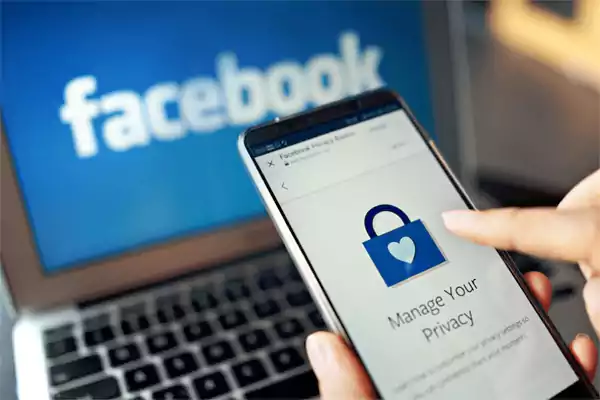
With more than half of the world’s population on social media, it has become easier than ever to access anyone’s private information, making social media threats prevalent. Considering the increasing number of cyberspace attacks and scams, you must use social media in a threat-intelligence manner to protect and shield your virtual identity.
The hackers sit in an ambush to invade your privacy and steal your identity by locking you out of your social media. Hence, incorporating threat intelligence into social media is a no-brainer choice for you. Let’s look closely at social media threats and ways to improve digital safety together.

Social media has become a hotspot for trolling, identity theft, scams, and harassment. This raises the need to mitigate risks in cybersecurity, and shield your personal data. You must have come across using social media in threat intelligence articles that highlight the need to track social media activities to prevent privacy threats.
By using social media in cyber incident response and monitoring tools, businesses and individuals can shield themselves from potential cyber risks. Social media intelligence, traditionally used for collecting and analyzing business-related data, now plays an important role in security measures.
It acts as a cyber police, monitoring social media activities to identify potential future threats. By collecting and analyzing data from social media about organizations and individuals, potential threats or vulnerabilities can be spotted.
Implementing security measures like regular account monitoring, privacy settings, and employee training can help organizations defend against cyberattacks.
This makes an organization safe from any future disparities. They can take the necessary actions quickly before a potential cyber threat, safeguarding sensitive data and maintaining a secure online presence, which will contribute to the growth of their business.
The vast amount of information available on the internet makes it easier to exploit critical data. Cyberattackers use social media for easy access to people’s lives and threaten them, steal their identities, or carry out money-laundering scams.
Platforms like LinkedIn effortlessly offer work details and email addresses, which can be used for phishing scams. Unlike Snapchat, Instagram lacks notification for stolen data, making many users unaware that their images are being misused for identity theft.
Many more such threats are mentioned below:
Cybercriminals can impersonate you or your brand’s identity, tricking people into believing it’s actually you. They can create fake customer support pages, which can lead to stolen confidential information and money-related demands.
Attackers can exploit email IDs and threaten other users by sending malicious links or deceptive emails, which can be accepted as legitimate emails by trusted authorities. They can impersonate high-ranking officials to deceive employees, potentially leading to private data leaks, demands for money, or the installation of malware that can disrupt their systems.
Social engineering is a cunning psychological attack where the attacker deceives the personnel by sending authentic messages, analyzing their social media engagements like posts, photos, and connections, and pretending to be someone known.
Cyberattackers spread malware through links, apps, or files to steal your data, stopping you from using your devices or monitoring your activities.
Trolling and harassment have sadly become common among social media users. Hurtful comments, edited videos, and photos are frequently seen, causing distress to many. This negative behavior can impact social media users by affecting their mental state and overall well-being. Cyberattackers use this to target vulnerable people and can manipulate victims into revealing personal information.

Businesses maintain their social media presence for various reasons, like building brand recognition, customer connections, receiving feedback, analyzing trends, and gaining audience trust. So, protecting your business on social media by using social media in threat intelligence article can help you maintain a positive brand identity and favorable reputation.
Therefore, to protect your business in the digital space, start implementing the following strategies:
Use tools that track your social media sites for any suspicious activities, and watch out for accounts impersonating your brand identity. Attackers use tags and mentions to spread malware through links.
They can also demand money and personal information from fake accounts. If you encounter any such activity, report it immediately to prevent a cyberattack. By using social media in an incident response article, you can reduce the risk of such identity threats.
Make sure that employees’ social media accounts are in private mode, and use tools like restrict and my contacts only to reduce the risk of any social media fraud. Establish social media policies within the organization and ask employees to read about using social media in a cyber incident response article and not to share confidential or personal information on these platforms.
Advise employees to not accept friend requests from unknown accounts and to verify usernames and passwords thoroughly to improve security measures.
It’s strongly recommended to let professionals handle social media business accounts, as they know how to take precautionary measures. Do not share business account access with too many people. Regularly monitor the social media activities of your business account and update passwords or withdraw access to accounts when roles change.
Additionally, using social media in threat intelligence can prevent data theft and also perform frequent reviews of social media security controls to assure safety. Keep an eye on the social media business account activities of the staff to maintain a protected online setting.
Enable end-to-end encryption and multifactor authentication for a safer social media experience. End-to-end encryption ensures that no third parties can access your message exchange, offering a layer of protection that is necessary for online business communication.
Similarly, multifactor authentication restricts easy access to business accounts, requiring personnel to go through multiple layers of verification before gaining entry. This adds to the multiple layers of protection and security on your account.
Create strong and unique passwords for your accounts. Use a combination of numbers, characters, and special symbols with both lowercase and uppercase letters. This will make your password different and reduce the chances of it being easily hacked.
Install antivirus and anti-malware software on your devices. They use signature-based matching techniques to detect viruses, malware, and malicious code on your system. Implementing these to stay ahead of the game and mitigate security threats to users or organizations is a crucial step in today’s digital landscape.
Regular staff and employee training on social media and security measures is necessary. Training should be provided to employees according to their role to ensure it’s more effective, and using social media in an incident response can prevent others from experiencing similar scams. Maintain a record of employee training and success rates to track progress.
Introduce some social media policies while training and some common ground rules, like not sharing your passwords and using multifactor authentication and end-to-end encryption only. Keep your devices and software up to date to mitigate cyberattacks.
Avoid oversharing your social handles, using public Wi-Fi, and clicking on links that can install malware on your device. Furthermore, always verify the emailer’s identity before replying to their emails or sharing any personal and confidential information with them. You can also search for cybersecurity firms that are shaping up the battle against cybercrime, and use their services to protect your assets.
In this digital realm, social media plays an important role, that’s why it is important to take security measures to protect your data. Taking necessary measures, like reading about using social media in a threat intelligence article or using social media in an incident response article, can help you secure your online presence and protect your sensitive information from potential future threats.
These precautions will help you maintain a safe and secure digital experience, thus ensuring your organization is shielded against any potential data thefts.
In this digital realm, social media has become a privacy threat due to the vast amount of personal information that is present there. Cyberattackers can exploit social media to gain information that can lead to identity theft, data breaches, or scams. So, using social media in cyber incident response can prevent similar scams on social media from occurring.
Ensure you use strong passwords, and enable privacy settings, end-to-end encryption, and multifactor authentication. Avoid clicking on suspicious links or responding to unknown messages and emails.
Cybersecurity helps you protect your sensitive data. It also prevents you from cyberattacks that could damage your online presence or device. Cybersecurity ensures that you sit back and relax, it will take all the necessary steps to secure your digital world.
